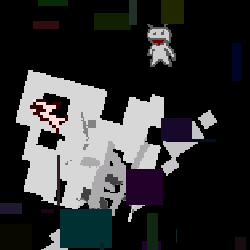
If you play independent digital games, you’re surely familiar with the retro style. Even the scary mainstream publishers have put out titles like Megaman/Rockman 9. This neo-retro approach — I’m not sure if there’s a common name for it — has modern developers make new games that could theoretically run on old hardware. There are quite a few excellent neo-retro games out there, like La-Mulana, a tribute to the MSX, most of the entries in the TIGSource Bootleg Demakes competition, and a work-in-progress game I’ve been playing today, This game is Wizard.
I’m making a distinction here between neo-retro games and games that just use “retro” graphics. Pixel art like in Cave Story or lo-fi art like in Cactus’s games are purely artistic choices, and don’t necessarily represent a deliberate restriction of the game design like the neo-retro approach. That’s what it is, really: a restriction.
